Module 5—Circular Motion
 Reflect and Connect
Reflect and Connect
Newton not only provided the explanation of planetary motion, his explanation can be extended to explain the motion of other celestial bodies. The Moon’s orbit is accurately explained by considering Newton’s universal law of gravitation. It is the gravitational force between Earth and the Moon that produces an inward acceleration, constantly changing the direction of the Moon’s velocity and making it follow a circular path. Given the mean orbital radius (average distance between the centres of mass) and the mass of Earth, it is possible to determine both the velocity and acceleration of the Moon. Completing a similar analysis for the Chandra X-ray Observatory—an artificial satellite—shows that both the Moon and Chandra obey the same universal law that explains their motion.
| Moon (Natural Satellite) r = 384 400 km |
Chandra X-ray Telescope (Artificial Satellite) r = 120 963 km |
|
| Acceleration | 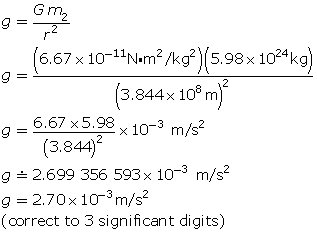 |
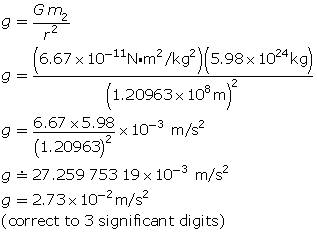 |
| Velocity | 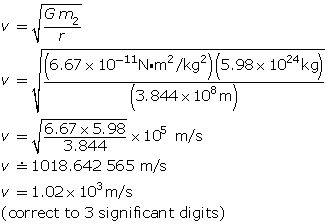 |
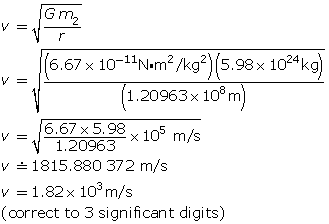 |
Comparing the radius values used in Newton’s universal law of gravitation, the Chandra X-ray Observatory is about three times closer to Earth than the Moon. This is reflected in the fact that the observatory travels at a greater rate of speed with a larger acceleration to keep it on a circular path. Both motions are explained in exactly the same terms.
 Module 5: Lesson 4 Assignment
Module 5: Lesson 4 Assignment
Remember to submit the answer to Discuss to your teacher as part of your Module 5: Lesson 4 Assignment.
 Discuss
Discuss
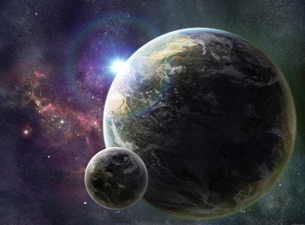
© Fernando Rodrigues /shutterstock
In 1995, the first planet outside of our solar system was discovered and named “51 Pegasi b” after the star it orbits. Planets like this are called extrasolar because they are outside Earth’s solar system. Compared to the bright stars they orbit, extrasolar planets are very difficult to directly observe, given the astronomical distance they are from Earth. One of the most common and successful ways to find a planet is to observe the star it orbits.
Using the article titled “Then, Now, and Future: Extrasolar Planets” on page 283 of the textbook as a reference, propose an indirect method for finding extrasolar planets using the principles of circular motion and Newton’s universal law of gravitation. If such planets were discovered with this method, explain why it would be unlikely that life would exist on them.
 Reflect on the Big Picture
Reflect on the Big Picture
Each of the Reflect on the Big Picture sections in this module will ask you to consider the movement of objects in a circle or part of a circle. You may want to combine your reflection for this lesson with some of the work on the project.
- Placing artificial satellites in orbit around Earth has become commonplace over the last couple of generations. Research the orbits of the GPS satellites and the required speed of the satellites. Write a short report about your findings.
- Prepare a computer simulation of the orbits of GPS satellites.
- Calculate the speed of both of Mars’ moons and their distance from Mars.
Store your completed reflection in your Physics 20 course folder.
 Module 5: Lesson 4 Assignment
Module 5: Lesson 4 Assignment
Remember to submit the Module 5: Lesson 4 Assignment to your teacher.